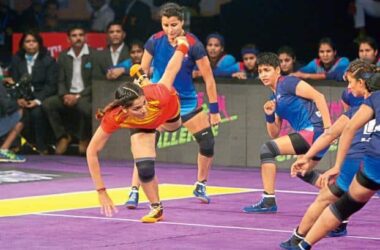Boxing has evolved from a combat sport to a full-body fitness experience, drawing in everyone from elite athletes to casual fitness enthusiasts. But whether you’re training to compete or working out to stay fit, one thing remains the same: you need the right boxing equipment. It’s not just about gloves and bags—it’s about safety, performance, and technique.
In this comprehensive guide, we’ll walk through the essentials of boxing gear, discuss what makes the best boxing gloves, and explain the role of professional boxing gear in improving both training quality and athletic longevity.
Why Quality Boxing Equipment Matter
Training in boxing is physically demanding. Every punch, movement, and drill puts stress on your hands, wrists, and body. Using low-quality or mismatched gear can lead to injuries and limit performance. Here’s why investing in proper equipment pays off:
- Safety first: Quality gear provides adequate protection to your joints, bones, and muscles.
- Skill development: Good equipment ensures consistent feedback and proper technique.
- Durability: Reliable materials stand up to the rigors of heavy use.
- Confidence boost: Knowing you’re well-equipped lets you train harder and focus better.
Essential Boxing Equipment for Every Boxer
Let’s break down the must-have items you’ll need for effective boxing training, whether you’re hitting the bag at home or sparring in a gym.
1. Boxing Gloves
Gloves are the most iconic and important piece of equipment in boxing. They protect both your hands and your training partner.
- Training Gloves: Ideal for bag work and general practice. Look for 12oz to 14oz options for a balance between protection and speed.
- Sparring Gloves: Heavier (usually 16oz), with softer padding to minimize injury risk.
- Competition Gloves: Lighter, designed for professional bouts, usually 8oz or 10oz depending on weight class.
When choosing the best boxing gloves, pay attention to:
- Fit and comfort: Gloves should feel snug but not tight.
- Material: Leather is more durable, while synthetic options are affordable for beginners.
- Wrist support: Strong velcro or lace-up closures are vital for injury prevention.
2. Hand Wraps
A must-have under any pair of gloves. Hand wraps support the small bones and tendons in your hands, preventing fractures and sprains. They also help absorb sweat, keeping your gloves fresh for longer.
3. Heavy Bag
A heavy bag builds punching power, endurance, and accuracy. Beginners should use a standard hanging bag, while advanced boxers might incorporate double-end or uppercut bags for specialized training.
When choosing a bag:
- Weight matters: A bag should weigh roughly half of your body weight.
- Material: Leather offers long-term durability; synthetic bags are easier to maintain.
- Mounting: Wall-mounted or free-standing bags both work—choose based on available space.
4. Headgear and Mouthguards
Sparring without proper protection is a recipe for injury.
- Headgear minimizes cuts and absorbs impact.
- Mouthguards protect against jaw injuries and concussions. Custom-fitted ones offer superior comfort and safety.
5. Punch Mitts and Focus Pads
If you’re training with a partner or coach, mitts are essential. They develop timing, accuracy, and coordination. Look for pads with thick padding, secure straps, and ergonomic curvature for realistic feedback.
6. Footwear and Apparel
Footwork defines boxing. Lightweight shoes with ankle support allow smooth movement without slipping. Breathable clothing ensures freedom of motion and temperature control.
Professional Boxing Gear: When to Upgrade
As your skills advance, investing in professional boxing gear can elevate your performance. High-end gloves, premium bags, and tailored protective gear are designed for durability, comfort, and precision.
Professional gear differs from beginner sets in several ways:
- Enhanced padding and stitching for longer lifespan.
- Superior ergonomics to promote proper punching form.
- Custom fits that prevent slippage or discomfort during long training sessions.
- Competition-grade materials that comply with sanctioning body regulations.
If you’re sparring regularly or training for fights, upgrading to professional-grade gear isn’t just an indulgence—it’s a necessity.
Maintaining Your Boxing Equipment
Even the best boxing gloves and professional gear won’t last if neglected. Here’s how to extend their lifespan:
- Air out gloves after every session to prevent odor and bacteria buildup.
- Use glove deodorizers or silica packs to control moisture.
- Clean hand wraps regularly—they absorb most of the sweat.
- Check stitching and padding for early signs of wear before they become safety hazards.
Boxing Equipment for Fitness Enthusiasts
Not everyone who boxes wants to fight competitively. Many people take up boxing purely for fitness, agility, and mental clarity. For this group, the essentials are simpler:
- A quality pair of training gloves
- Hand wraps
- A heavy bag or freestanding punching bag
- Jump rope for warmups
Even in a fitness context, the same rule applies: always choose gear that fits comfortably and supports safe technique.
Choosing the Right Brand or Supplier
When you shop boxing equipment, focus on reputable brands that prioritize safety and comfort. Look for products with transparent sizing charts, verified reviews, and clear return policies. Reputable suppliers like **Starpr









